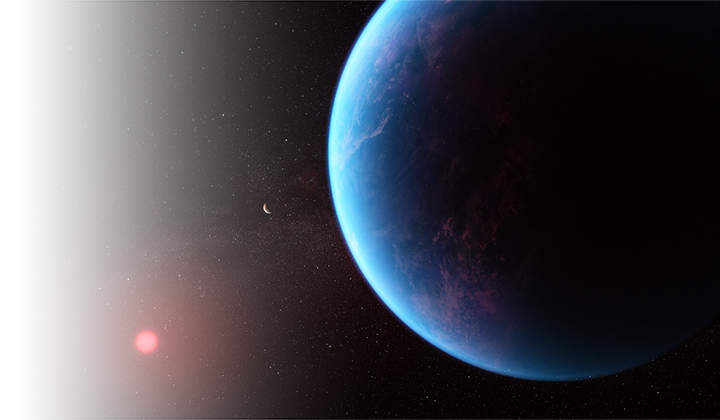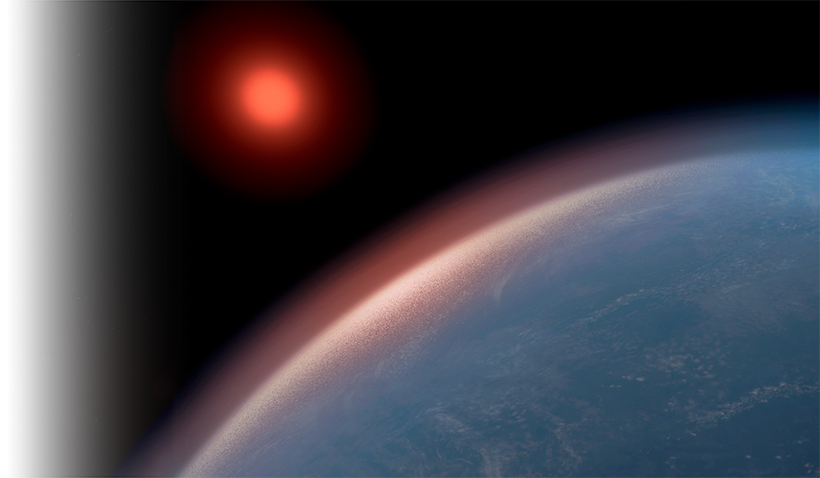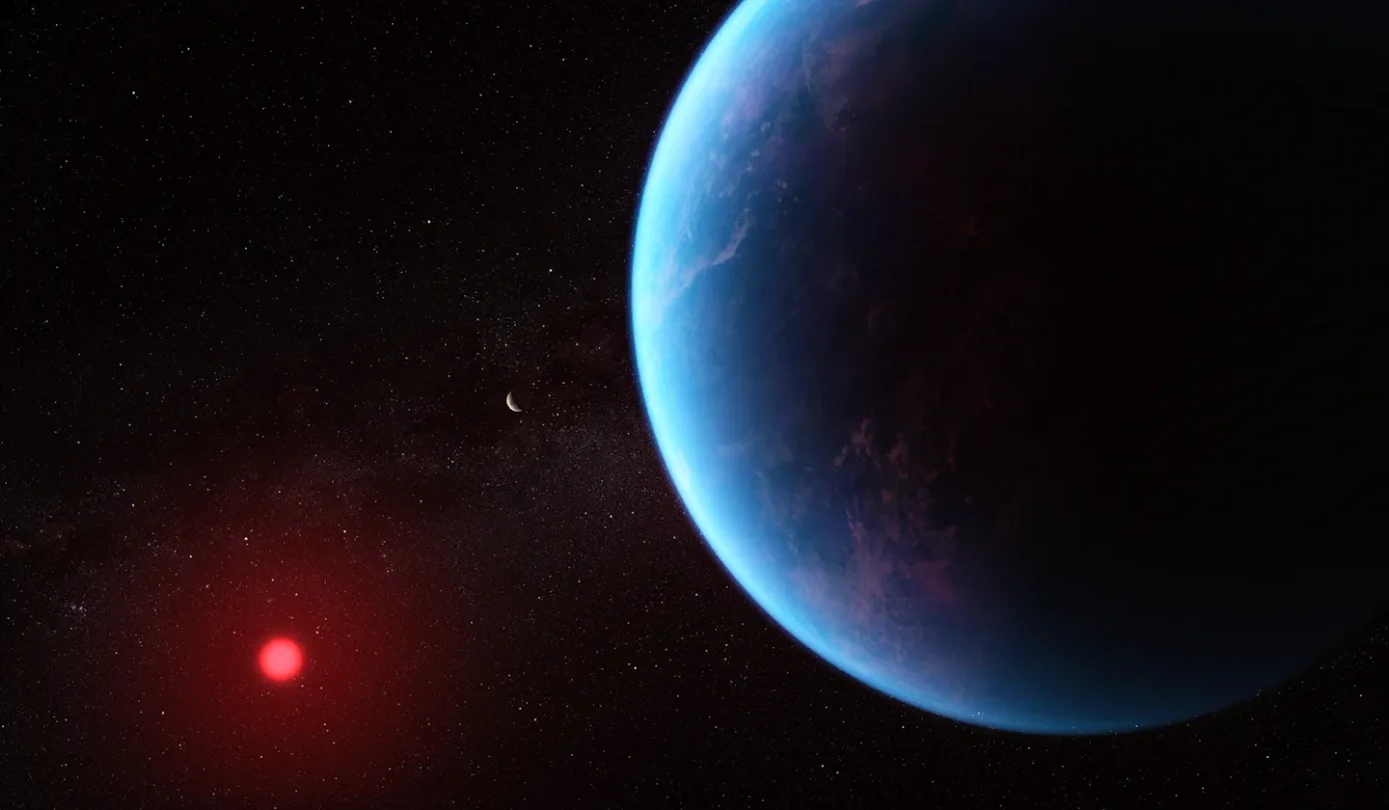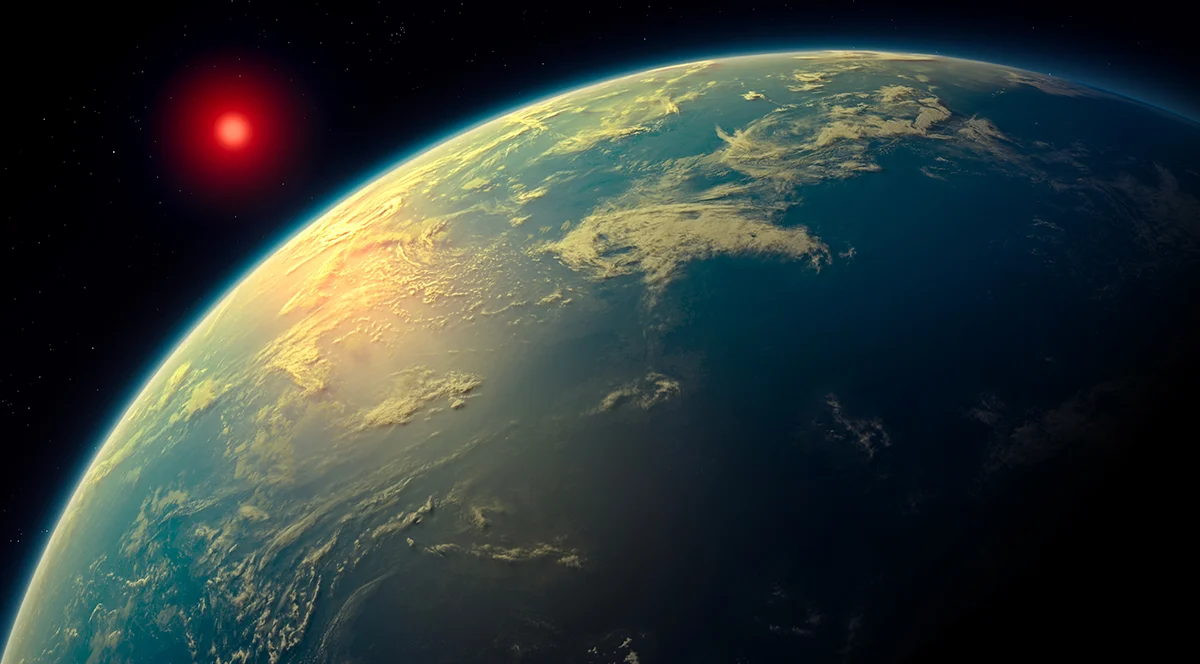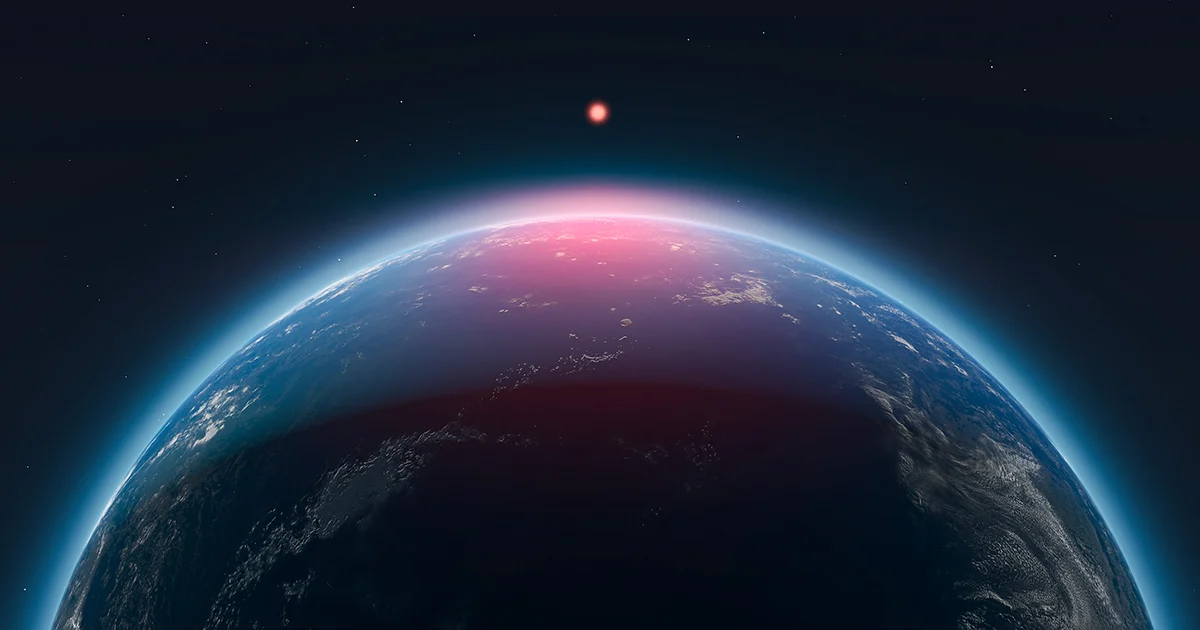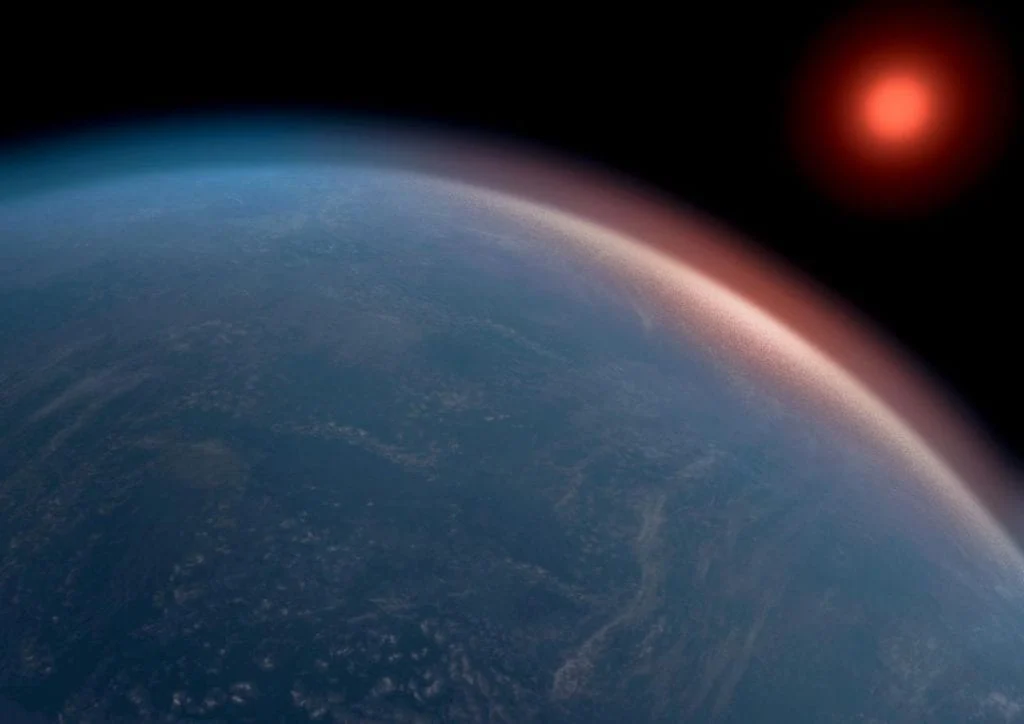Exploring sub-Neptune atmospheres to assess potential for habitability.
Hycean planets present a promising new avenue in the search for habitable conditions and life elsewhere.
Ongoing theoretical studies are steadily advancing our understanding of their interior structure and atmospheric chemistry, particularly in relation to habitability and biosignature potential. Observing the atmospheres of these worlds requires the most advanced telescopes, such as the James Webb Space Telescope (JWST), which has been operating since 2022, and extremely large ground-based telescopes, which will start scientific operations in the early 2030s.
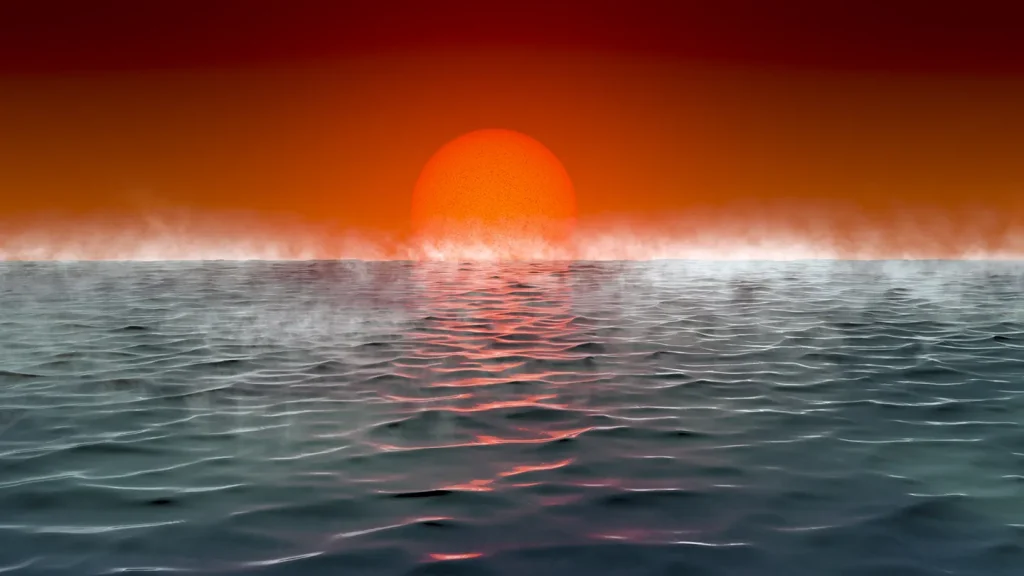
Research in our group spans across these domains, both theoretical and observational, to achieve a holistic understanding of hycean worlds. On the theoretical front, we develop and use computational models to simulate and understand a wide range of physical and chemical processes in hycean atmospheres, interiors, and oceans. On the observational front, we use JWST and ground-based observations of candidate hycean worlds to probe their atmospheres in search of important chemical compounds, including potential biosignatures.
Investigating exoplanet interiors to reveal structure, composition, and habitability.
Receive Email Updates
As we add news and content to the website, we'll email you to keep you updated!


